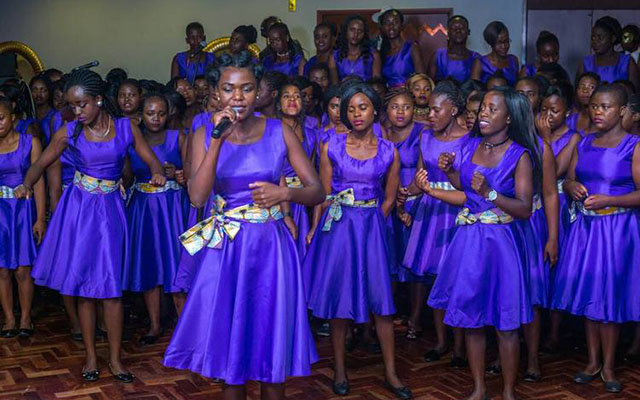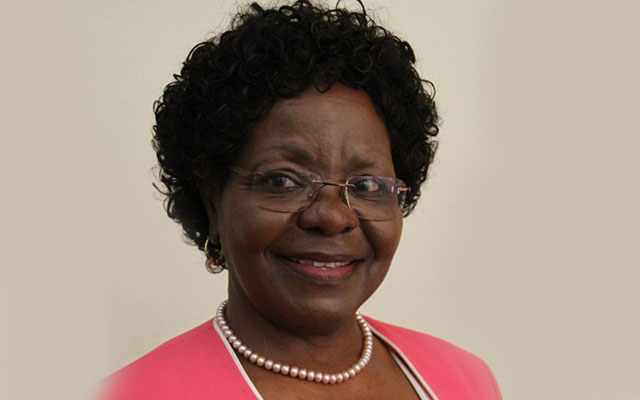Lafarge brings hope to Tafara, Mabvuku girls

Tatenda Charamba Features Writer
Bucy Shorai, a 22 –year-old young woman, had lost all hope about her future. Without financial support to do a vocational training course in catering, her world had carved in. She became restless and hopeless. Deep down inside, she knew that education and a vocational course was the only way to empowerment and hope.
Shorai, too, knew that education and empowerment was the only way to escape the burden of poverty. And, when she heard about the Shine: Simuka Upenye Empowerment Programme, run by the cement maker Lafarge Cement Zimbabwe, she was elated. For her, the programme, she thought, could be a springboard to better life.
“The Simuka Upenye programme has helped restore my hope for the future in an amazing way. Despite the fact that both my parents are dead and I am HIV positive, I still believe I can achieve a lot in my life. I’ve enjoyed support from my mentors. Now, I have gained confidence in myself and have dreams of opening a restaurant of my own in a few years to come once I complete my course,” Shorai said.
Shorai is one of 100 girls from Tafara and Mabvuku high density suburbs that have benefited immensely from the Shine: Simuka Upenye Empowerment Programme, which is supporting young girls to go to school and also equipping young women with life skills. Many of the beneficiaries attest that the programme has transformed their lives.
“My life was full of hope and big dreams but this came to an end when my mother died in 2011 when I was about to write my O-Level exams,” said Charity Kamucha who is now doing a construction course at Msasa Industrial Training College (MITC).
“My hopes of continuing with school were shattered yet I was an intelligent student. I managed to pass my O-Levels and someone with a good heart got me through A-Level where I attained 7 points, something that did not please me. Life became harder after I was done with my high school because the responsibility of taking care of my siblings was on me. This forced me to become a house maid.”
When Charity got support from Lafarge programme, she became optimistic.
“This programme enabled me to enrol for a construction course at Msasa,” she said.“The support I got from Lafarge has restored hope in me. I never imagined that I would do a course in construction, something which I’m passionate about. I dream about owning a construction company one day.”
During her spare time, she sells airtime to help take of her siblings. For some the programme has rescued them from social vices such as prostitution and early marriage. Most girls in Tafara and Mabvuku have dropped out of school and are doing commercial sex work owing to poverty.
This has largely prevented them from excelling in life and choosing their career paths. Many too, are exposed to sexually transmitted diseases as they are trapped in poverty. Industry and Commerce Minister, Mike Bimha hailed Lafarge for its corporate social responsibility programme.
“This Shine programme today is a big example of empowerment and employment,” he said at fundraising dinner recently for the Shine: Simuka Upenye programme.
He said it was important for all large multinational firms which are exploiting the country’s abundant natural resources to undertake CSR programmes that empower locals and create jobs.
“Aid as we have grown to know it, is more of giving beneficiaries fish and not teaching them how to fish or giving them shares in the pond. I am glad to say the trajectory is changing, albeit slowly, to a more sustainable fishing, teaching beneficiaries to fish and sharing the pond,” Minister Bimha said.
“The Lafarge Shine: Simuka Upenye programme is structured in a sustainable manner where instead of the usual hand-outs which run out after a short time, a 100 young women are being equipped with lifelong skills that are a strong foundation for the development of educated and confident young women.”
Speaking at the same event, Lafarge Cement Zimbabwe chief executive officer, Mrs Amal Tantawi said public support was critical for the success of the programme.
“The Shine programme falls within the community empowerment pillar of our corporate social responsibility initiatives and it has been impactful in a way we never anticipated. We are now confronted with the challenge to sustain this programme beyond what we have done so far. We would like to support these girls to set up businesses after the program or to go into formal employment. We would also like to enrol more girls in 2018 and we cannot do this alone. We have therefore decided to bring all our partners to work with us on this journey,” she said.
The programme was launched early this year to help empower young girls and women staying in Tafara and Mabvuku where cases of unplanned pregnancies, unsafe abortions and baby dumping are rampant.
Mabvuku Social Services helped in identifying girls in the community that were in need of the Shine: Simuka Upenye programme. Various partners were working together to develop sustainable interventions to address of the problems facing young girls and women in the Tafara and Mabvuku community. The Shine: Simuka Upenye programme focuses on vocational training, mentorship programme which has provided role models to inspire success, entrepreneurship training and business incubation.
The girls are put through vocational training at MITC and at Harare Poly Technic for courses such as brick and block laying, catering and clothing construction. Partners that Lafarge Cement Zimbabwe is working with include the Women’s University in Africa, Mabvuku Social Services, UNFPA, Zichire, MITC, Harare Polytechnic and Steward Bank.
Girls are vulnerable and need education to prevent teenage pregnancies, violence, child marriages, peer pressure, drug abuse and prostitution. According to the UN, there are nearly 600 million girls aged 10 to 19 in the world today, each with limitless individual potential. However, the global agency says, they are disappearing from public awareness and the international development agenda.
Experts say between inequities in secondary education to protection issues, adolescent girls are uniquely impacted and should benefit from targeted investments and programmes that address their distinct needs. They further say that investing in adolescent girls can have a huge ripple effect to create a better world by 2030.











Comments